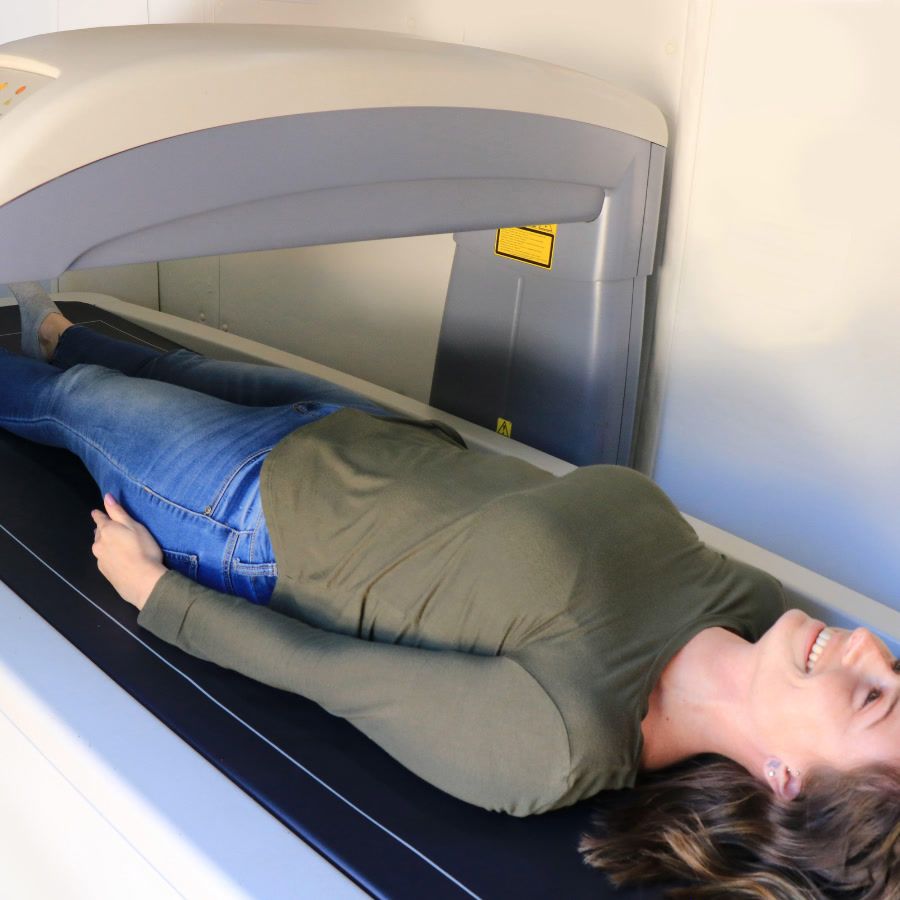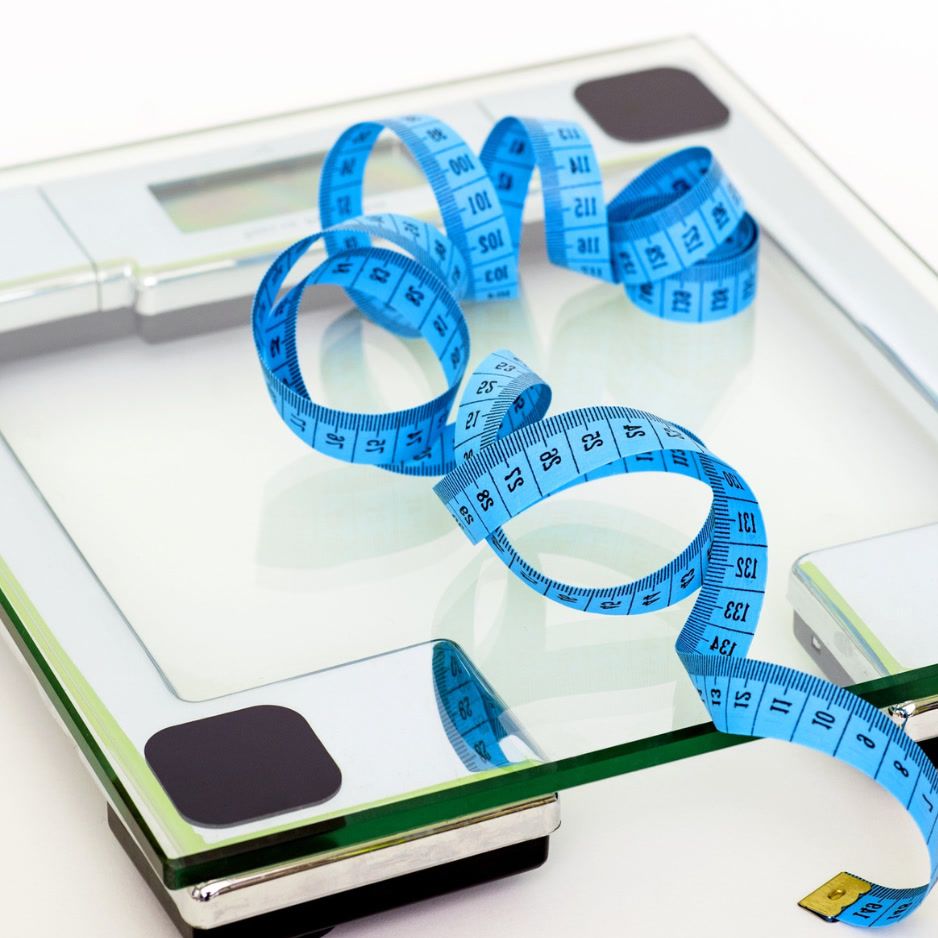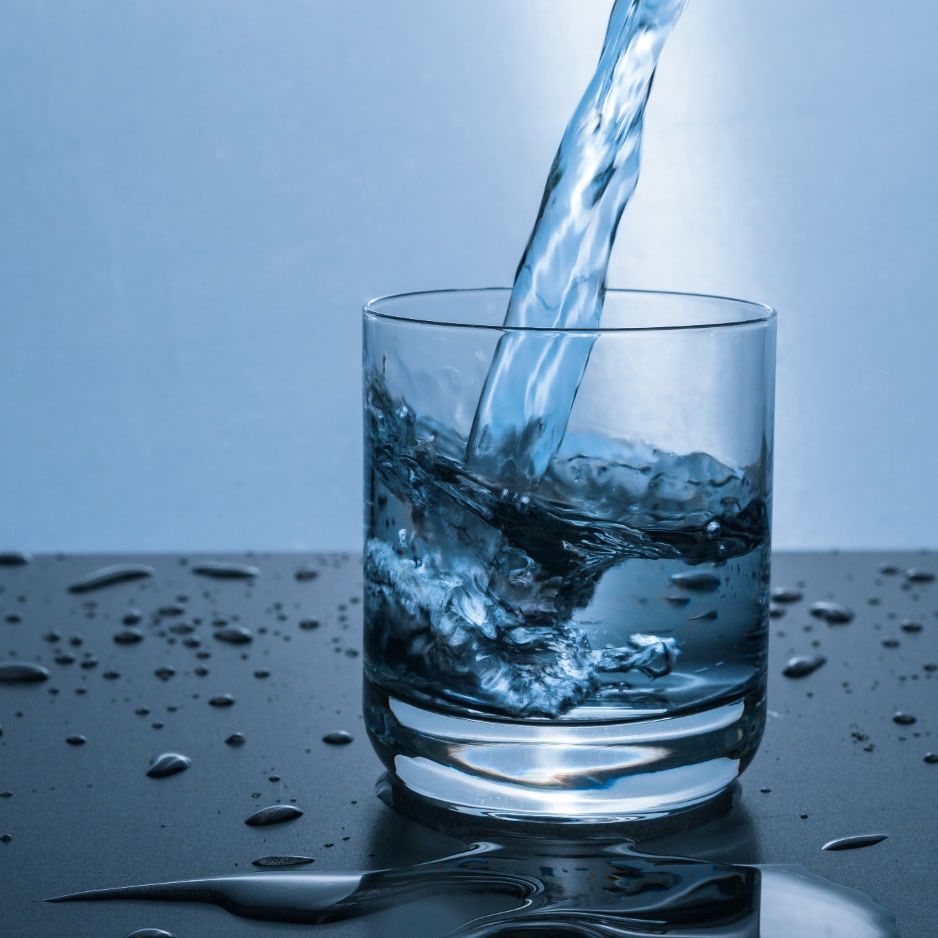How to Get a Toned Stomach: Workouts, Nutrition, and Tracking Strategies

How to Get a Toned Stomach: Science-Backed Workouts, Nutrition, and Tracking Strategies
Everyone wants strong, visible abdominal muscles—but most Google searches for a “toned stomach” surface conflicting advice, gimmicky gadgets, or crash-diet hacks.
This guide cuts through the noise with research-driven principles you can use right away. Whether you’re an intermediate gym-goer, a busy professional squeezing in quick sessions, or a postpartum mom rebuilding core strength safely, you’ll find an evidence-based roadmap below.
Quick takeaways
- Achieving a toned stomach means lowering body fat and building abdominal muscle—fat loss is non-negotiable.
- A modest calorie deficit plus high-protein, whole-food eating accelerates fat loss, keeps you fuller, and preserves lean mass.
- Progressive-overload core moves—weighted planks, dead bugs, carries—outperform endless crunch marathons.
- Certain advanced plank variations can exceed 80 % maximal voluntary contraction in key core muscles (Finatto 2020).
- Sleep, stress management, hydration, and daily movement amplify results. These lifestyle pillars set the stage—and a BodySpec DEXA scan lets you verify those body-composition changes with precision.
What Does “Toned” Really Mean?
“Toned” isn’t a scientific term; it’s gym slang for muscles that are strong enough (hypertrophied) to show through skin and body fat that’s low enough not to obscure them.
Think of muscle and fat as clothing layers. Hypertrophy “bulks up” the shirt (your abs) while fat loss peels off the jacket—do one without the other and definition stays hidden.
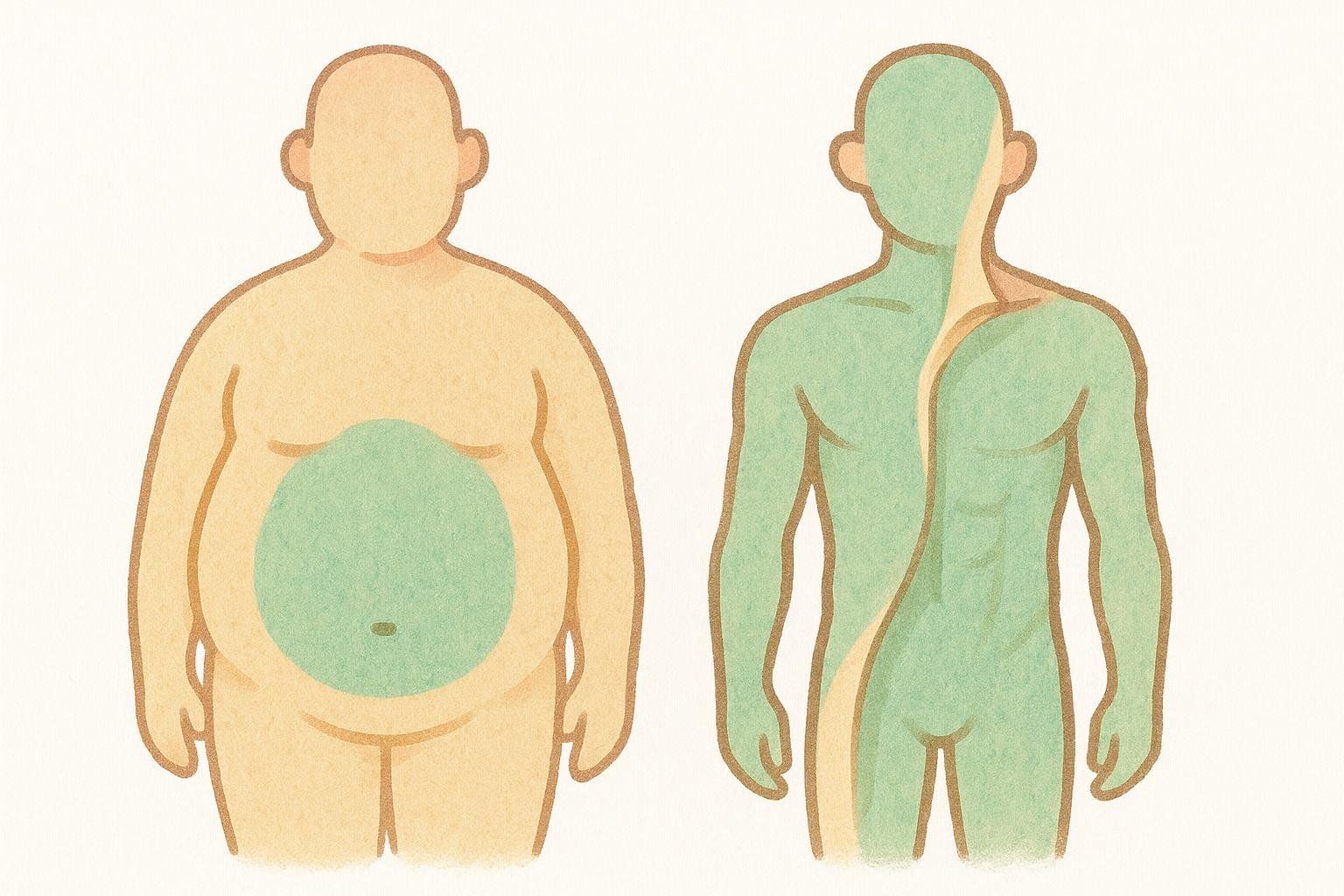
Visceral vs. Subcutaneous Fat: Why It Matters
- Subcutaneous fat sits under the skin and hides ab grooves.
- Visceral fat wraps your organs and increases metabolic risk.
Lowering both is crucial for a toned look and long-term health. Learn more in our visceral-fat deep dive.
Step 1 – Dial In Your Nutrition (Fat-Loss First!)
Your kitchen decisions play a major role in revealing your abs—many coaches even call nutrition the “make-or-break” factor.
Below, we translate blunt calorie math into practical, plate-level tactics that prioritize satiety, muscle preservation, and sustainable fat loss.
1. Create a Modest Calorie Deficit
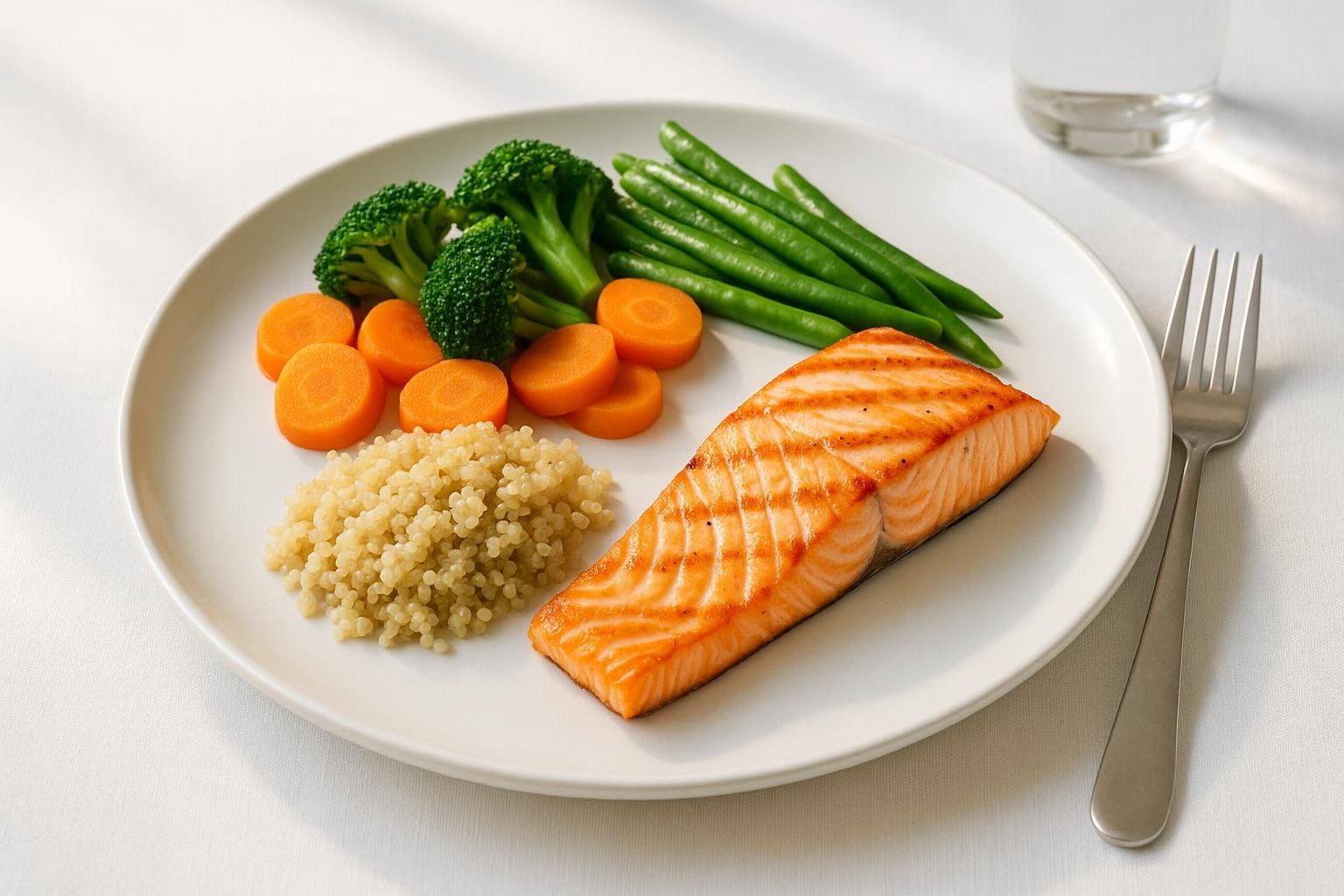
Target range: 250–500 calories below maintenance. Going steeper can torch hard-earned muscle and drain energy.
How to find your maintenance calories:
- Ensure body weight is stable. If you’re currently gaining or losing, estimate maintenance first with a reputable TDEE calculator.
- Track intake for 7–14 days with a food-logging app.
- Average those daily numbers—this is your personalized maintenance level.
- Subtract 10–15 % (≈ 250–500 kcal for most people) to set your daily target.
2. Prioritize Protein
Higher protein intakes (1.6–2.2 g/kg body weight) preserve muscle while dieting (JISSN Position Stand) and promote satiety.
| Body weight (lb) | Daily protein target (g) | Sample whole-food sources (~25 g each) |
|---|---|---|
| 120 | 87–120 | 3 oz grilled chicken, 1¼ c non-fat Greek yogurt, 1 scoop whey |
| 150 | 109–150 | 4 oz baked salmon, 1 c low-fat cottage cheese, 4 large eggs |
| 180 | 130–180 | 3 oz lean beef, 4½ oz tempeh, 1¾ c cooked lentils + 1 tbsp nutritional yeast |
Distribute protein over three to five meals to optimize muscle-protein synthesis.
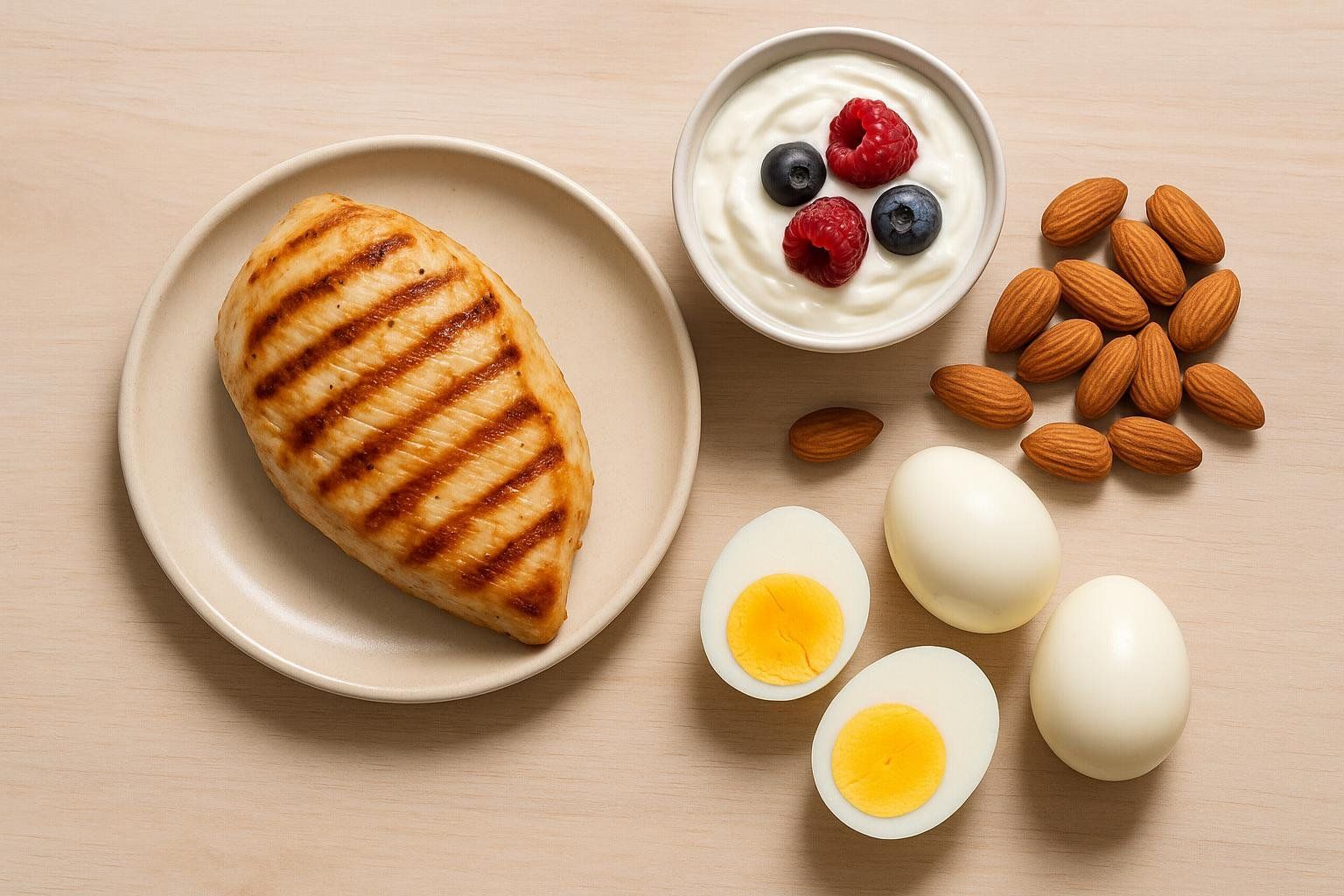
3. Maximizing Satiety with Protein and Whole Foods
Hunger is the #1 diet-derailing enemy. Protein and minimally processed whole foods pack more satiety per calorie than refined snacks or sugary drinks because:
- Protein’s thermic effect burns about 20–30 % of its calories during digestion.
- Fiber and water volume in produce stretch the stomach and trigger fullness hormones.
| Swap This | For This | Why It’s Better |
|---|---|---|
| Flavored latte (250 kcal) | 12 oz black coffee + protein shake (180 kcal) | +25 g protein, fewer calories |
| Chips & dip (300 kcal) | Apple slices + 2 tbsp peanut butter (250 kcal) | Fiber + healthy fat |
| White bagel (280 kcal) | 1 c cooked oats with berries (250 kcal) | Fiber + water volume |
4. Emphasize Whole, Anti-Inflammatory Foods
Chronic low-grade inflammation hampers recovery and may blunt fat-loss signals. Build your grocery list around:
- Colorful produce (berries, leafy greens, bell peppers)
- Omega-3-rich fish (salmon, sardines) 2–3×/week
- Polyphenol powerhouses (green tea, turmeric, extra-virgin olive oil)
- Probiotic and prebiotic foods (kimchi, kefir, oats)
These foods nourish your gut microbiome, which is linked to improved body composition (Frontiers 2019).
5. Time Carbs Around Training (Optional but Helpful)
If you train intensely, place most of your starchy carbs (rice, potatoes, whole-grain pasta) within two hours before or after workouts. This supports performance and replenishes glycogen without exceeding daily calories.
Step 2 – Train Your Core (and the Rest of You) Smartly
Spot-reducing belly fat with crunches alone is a myth—fat loss happens system-wide, but smart core work makes the muscle underneath worth showing.
The Role of Compound Lifts
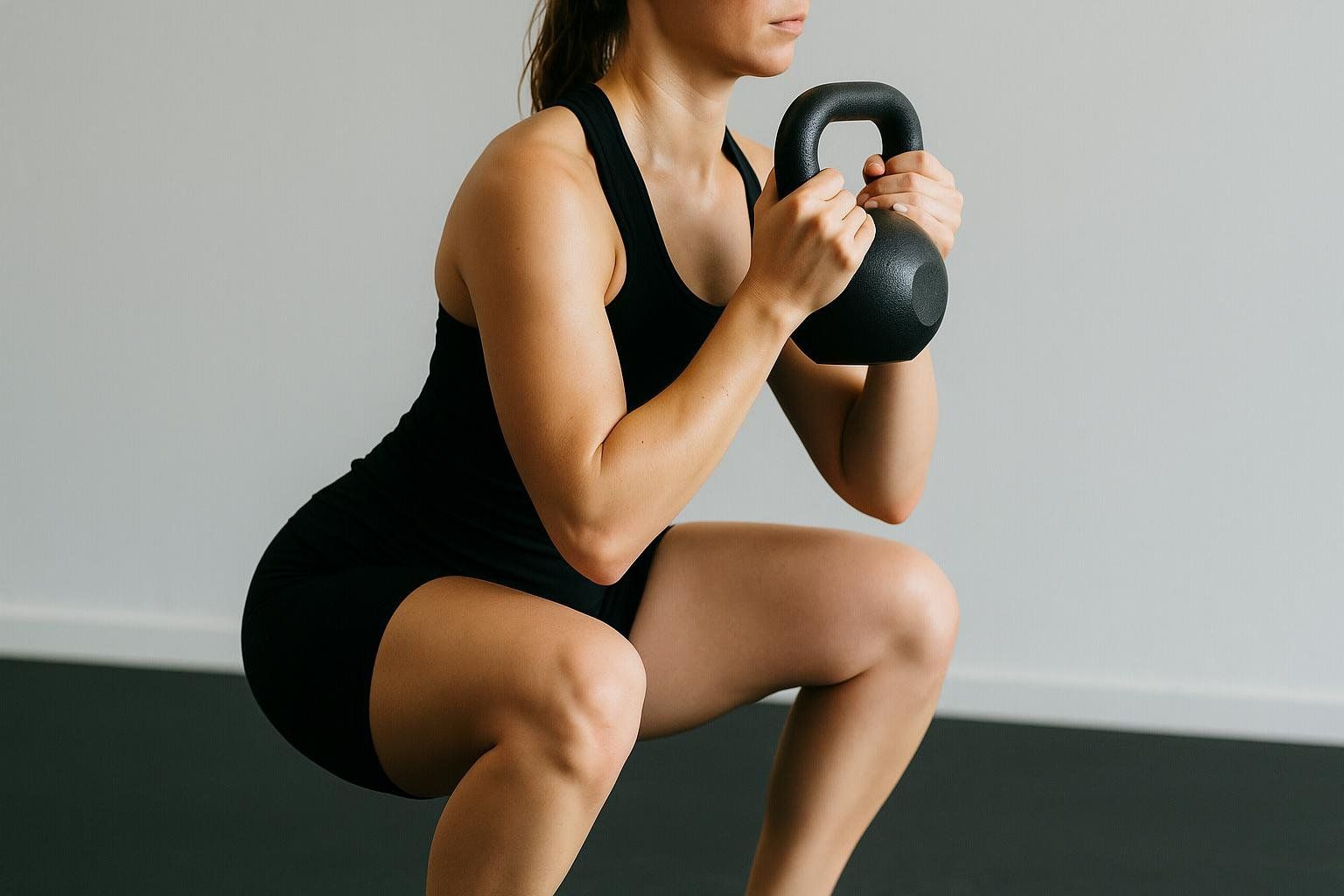
Full-body, multi-joint exercises—think deadlifts, squats, overhead presses—burn more calories per minute, stimulate a larger hormonal response, and load the core dynamically. Include two to three strength sessions per week featuring compound lifts to complement your dedicated ab work.
Progressive Overload for Abs

Muscles—including abs—grow when you challenge them with gradually heavier loads, longer time under tension, or higher volume. Treat your core like any other muscle group:
- Choose resistance you can manage for 8–15 reps with good form.
- Increase challenge every 1–2 weeks (add weight, extend plank time, slow the tempo).
- Deload roughly every 6–8 weeks to avoid over-reaching.
Evidence-Based Ab Exercises
| Exercise | Why It Works | How to Progress |
|---|---|---|
| Advanced plank variations | High rectus abdominis & external oblique activation—some exceed 80 % MVC (Finatto 2020) | Elevate feet, add weight, or lift one limb |
| Dead bug | Reinforces spinal stability and deep-core engagement | Hold light dumbbells overhead or add band tension |
| Hanging knee/leg raise | Greater lower-ab recruitment than standard crunch (Jeon 2019) | Straight-leg raises, weighted cuffs |
| Cable woodchop | Hits obliques & deep core through rotation | Heavier cable weight or half-kneeling position |
| Farmer’s/suitcase carry | Whole-core anti-lateral-flexion & anti-rotation (Santana & Aziz 2016) | Heavier implements or longer distance |
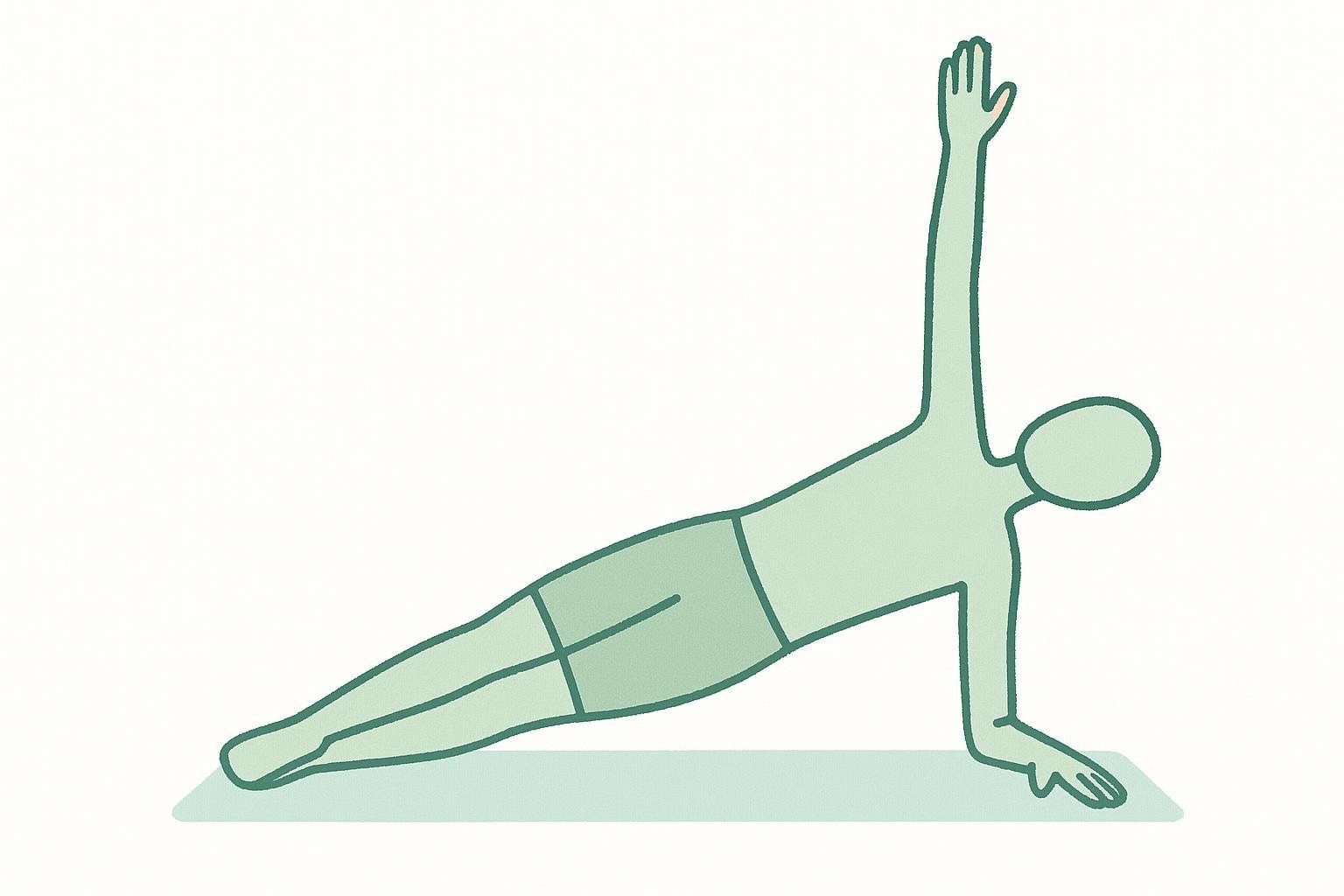
20-Minute Sample Routines by Persona
Before starting any of the routines below, warm up with about three minutes of dynamic mobility.
Fitness Enthusiast Emily (Intermediate, Gym-Based)
- Barbell hip thrust 4 × 8 (60–90 s rest)
- Weighted front plank 3 × 30 s
- Hanging leg raise 3 × 10
- Cable woodchop 3 × 12/side
- Rower sprint or sled push 4 × 15 s (HIIT finisher)
Busy Professional Mike (Time-Crunched, Home or Hotel Gym)
- EMOM (Every Minute On the Minute) for 10 minutes: At the start of each minute, perform 8 kettlebell swings followed by 8 push-ups. Rest for the remainder of the minute; repeat for 10 minutes.
- Superset (4 rounds): Plank shoulder taps 30 s / Goblet squat 12 reps
- Farmer’s carry 3 × 30 m (heavy dumbbells or loaded duffel bags)
- Cool-down: 10-minute walk during a voice call to boost daily steps
Postpartum New Mom Sarah (Weeks 8+, Recovery-Focused)
Safety first: Obtain medical clearance from your provider and stop any movement that causes abdominal “coning” or pain.
- Diaphragmatic breathing 5 × 5 breaths
- Heel-slide dead bug 3 × 10/side
- Side-lying clamshell 3 × 15/side
- Modified plank on knees 3 × 20–30 s
- Stroller walk 15–20 min at a conversational pace
Step 3 – Lifestyle Upgrades That Reveal Abs
Sleep 7–9 Hours

Poor sleep raises ghrelin, lowers leptin, and sabotages fat loss. Practical tips:
- Keep a consistent bedtime—circadian regularity supports sleep quality alongside total hours of rest.
- Dim lights and screens 60 minutes before bed to encourage melatonin release.
- Maintain a cool (60–67 °F) and dark bedroom to enhance deep-sleep phases.
Dive deeper in our article on sleep’s role in muscle recovery and weight loss.
Manage Stress
Chronically high cortisol encourages belly-fat storage and muscle breakdown. Evidence-based strategies:
- Box breathing (inhale 4 s, hold 4 s, exhale 4 s, hold 4 s).
- Mindfulness apps for 10 minutes between meetings.
- Exercise snacks—two minutes of air squats or jumping jacks each hour lower acute stress and raise daily calorie burn.
Find more tactics in our guide on stress and weight gain.
Hydrate & Replace Electrolytes
Even 2 % dehydration can drop workout performance. Drink half your body weight (lb) in ounces daily, plus 12–16 oz per sweaty session. For workouts > 60 minutes or in heat, include sodium-rich foods (pickles, broth) or a low-sugar electrolyte mix. See our electrolyte explainer for details.
NEAT: The Hidden Calorie Burner

Non-exercise activity thermogenesis—everything from standing and fidgeting to walking—can contribute hundreds of extra calories per day, sometimes rivaling structured workouts (Levine 1999). Aim for 8,000–10,000 steps most days. Simple hacks: park farther away, pace during phone calls, set hourly “move” reminders. For a deeper dive, read Using Your Activity Tracker Like a Pro.
Tracking Progress: DEXA > Bathroom Scale
A bathroom scale can’t tell whether you lost fat, muscle, or water—making small physique changes hard to spot. A BodySpec DEXA scan provides:
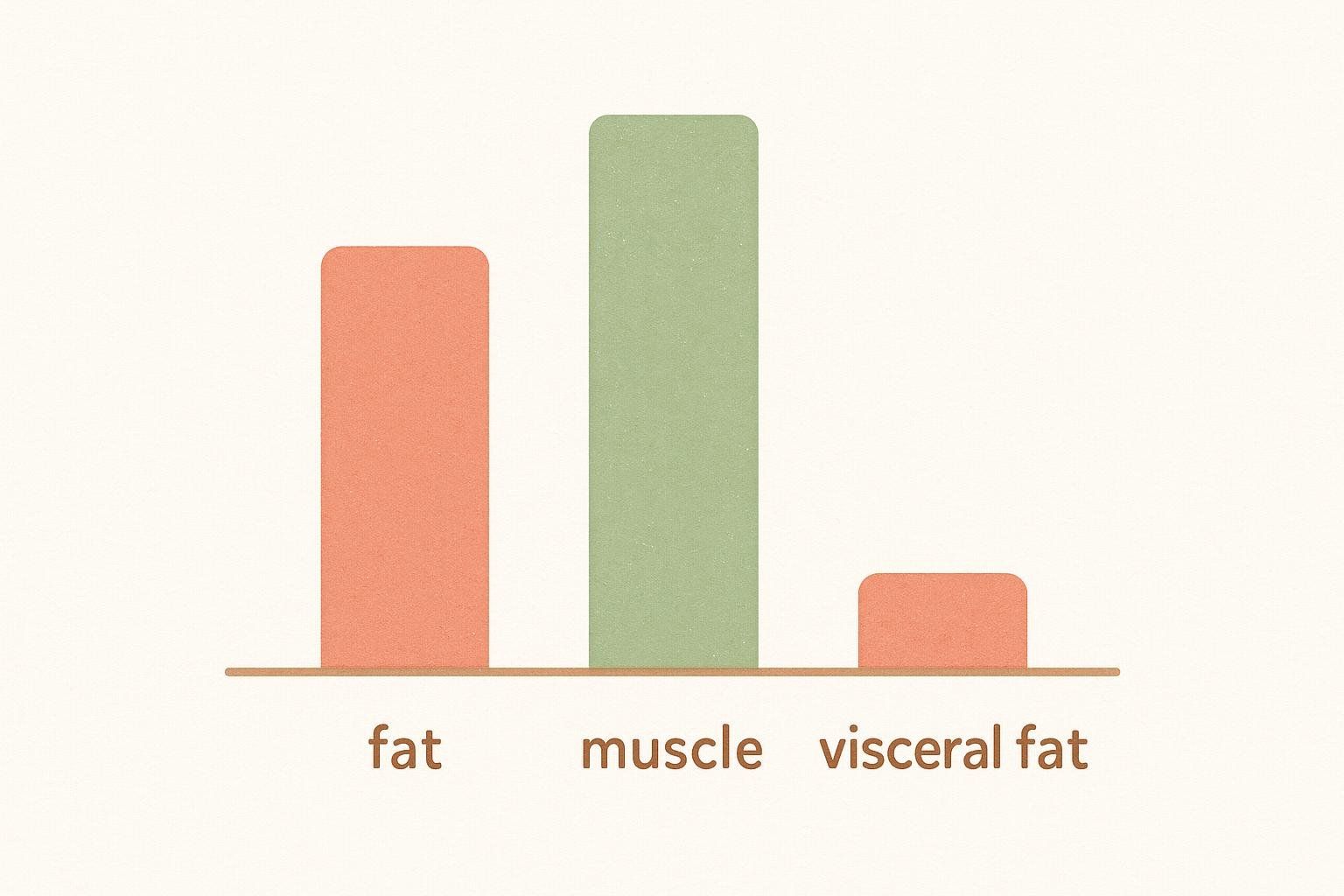
- Total body-fat percentage
- Regional fat distribution (arms, legs, trunk)
- Visceral-fat score
- Lean mass in every limb
With this data, you can detect subtle shifts—like torso fat reduction and core muscle increases—often before the mirror catches up. Learn how a DEXA scan works.
Pro tip: Scan every 8–12 weeks to verify you’re losing fat (not muscle) and to fine-tune calorie targets or training volume.
Frequently Asked Questions
How long does it take to get a toned stomach?
Results vary by genetics, starting composition, adherence, and lifestyle. With a 0.5–1 % body-weight loss per week and 2–3 core sessions weekly, some people notice changes in about 8–12 weeks.
Can I tone my stomach after pregnancy?
Yes—begin with pelvic-floor and deep-core reactivation (see Sarah’s routine) and progress gradually. Wait for obstetric clearance and avoid high-pressure moves (e.g., V-sits) until diastasis recti closes.
What body-fat percentage shows abs?
Men: ~10–13 % • Women: ~16–19 %—commonly accepted ACE guidelines. DEXA reveals your exact number.
Do ab exercises alone burn belly fat?
No. Studies confirm spot-reduction is ineffective. Combine full-body resistance training, cardio, and nutrition for systemic fat loss.
Are high-rep “ab burn” classes effective?
They build muscular endurance but rarely apply enough load for hypertrophy. Mix endurance sets with weighted, lower-rep core moves for balanced development.
5-Point Takeaway Checklist
- Maintain a mild calorie deficit and eat 1.6–2.2 g/kg protein daily from whole-food sources.
- Lift heavy compound movements and train abs with progressive overload 2–3×/week.
- Prioritize recovery—sleep 7–9 hrs, manage stress, stay hydrated, and move throughout the day.
- Use BodySpec DEXA scans every 8–12 weeks to track fat loss and muscle gain accurately.
- Adjust nutrition or training based on objective data—not scale weight alone.
Ready to See Real Numbers?
Find a BodySpec scan near you to track your journey to a toned stomach with lab-grade precision.
